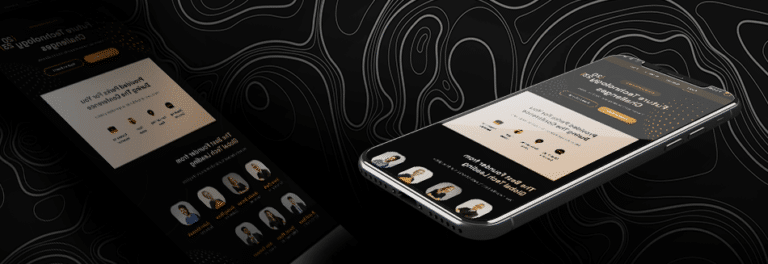Having email marketing strategies is going to help you better plan your initiatives for the future. However, every time you need to start a new project from scratch, it looks like you run out of ideas.
All you need is a little bit of inspiration and this article will give it to you, so you can plan an email marketing project.
We will introduce some strategies that can really help to convert new leads into paying customers.
We will also teach you how to improve the user experience for people who are already using your platforms and give you suggestions if you are struggling with engagement too. In this content you will find ideas, no matter your intentions regarding your email approach.
That being said, we will reveal many different strategies, and all of them are useful in the execution of a successful email marketing campaign.
Be ready to improve the quality of your email marketing strategies!
- Re-engage inactive customers
- Send mobile-friendly emails
- Increase subscriber engagement with A/B tests
- Automate email campaigns
- Deliver content with value
- Deliver personalized content
- Improve segmentation
Re-engage inactive customers
Some customers get disengaged over time. The reason might be on a low budget, or they don’t need your products and services at the moment or they have been caught up in a hectic routine.
What you should do in these cases is to plan email marketing strategies to re-engage inactive users. Sometimes, all they need is a little push, in the form of a special offer or discount, to be awakened.
We are aware that bringing new customers all the time is very costly to your company. That’s why re-engagement campaigns are so important. After all, they already know you and have trusted you enough to make a few purchases.
It’s not recommendable simply letting unengaged subscribers go. You have to make a last attempt.
To bring them back, you need to show a different side of your company, something they haven’t seen before or something that has the potential of calling their attention once again.
An efficient email marketing strategy to re-engage users is to send a message that makes clear how valuable they are to your company, even though they haven’t visited your website in a while or made any purchases. Of course, this message can bring some kind of gift or discount, encouraging them to take action. Following you can check out some other ideas.
- Disengaged users must be reminded why they subscribed to your channel in the first place. It’s your role to make them remember your brand and their reasons for having subscribed in the past.
- Surprises are excellent tools to call people’s attention. This idea can be explored in re-engagement campaigns. Think of exclusive products or offers. Let the unexpected be in charge!
- Send a message to raise awareness about what’s new on your page, your latest blog updates, and brand-new products. Driving inactive customers to your homepage or landing pages can be a good idea to make them take action.
- Design special content intending to convince inactive subscribers to interact with you. Surveys, polls, questions, research, or any kind of feedback can interest them to the point of convincing them to interact with you once again. Offer benefits if they complete the task.
- Prefer small images, if you use them in your emails or newsletters. They load faster and are easier to see on mobile devices.
- Anniversaries, holidays, birthdays, or any other date that represents a milestone is a great opportunity to send a message to re-engage inactive subscribers.
If these email marketing strategies, your re-engagement attempts, fail, that is, you get no response from inactive users, the best thing to do is to remove them from your lists. There is no point in keeping unresponsive users on your email lists. It’s better for everyone involved.
Send mobile-friendly emails
Many people use their mobile devices to open their mailboxes, and they don’t come near a desktop computer. You surely have people like this on your lists.
If your emails are not mobile-friendly, what will happen, eventually, is that these subscribers will give up your content, hitting the unsubscribe button.
Considering that the number of mobile-only openings is huge, companies can’t underestimate user preferences. The message must be adaptable and functional both on desktop or mobile devices. Check the following useful tips to learn how to write and produce mobile-friendly emails.
- Use a template with only one column, in order to have a quick and simple fix on smartphones or tablets.
- Watch out for the font style, color and size. Your words must be readable on small devices.
- Keep the subject line short, and the same goes for the pre-header, trying to use keywords in both elements. If your email is accessed through mobile devices, the recipient will already know what it is about.
- The Call to Action buttons must be easy to tap on, so pay attention in its size and position on the page.
- Have you ever heard about ergonomics? Well, it’s related to how people use their hands to deal with their phones. So, as many users use their thumbs to scroll up and down, use the middle of the screen to include tappable elements.
- Avoid sending links that send traffic to other pages, because users can open a new screen and get lost in the tabs.
There are many other things to pay attention to when we need to make mobile-friendly content. However, it is not smart to set the share of mobile-only subscribers aside in your email marketing strategies.
They must be included, for the sake of your email deliverability. If you send emails to people who only use phones or tablets in their daily life, but your messages are hard to scan and worse to read, they won’t open your emails anymore.
In other words, it has a negative impact on your email reputation, hurting your overall deliverability.
Think about it when you are exploring email marketing strategies. Consider the user experience, especially for the ones using their mobiles.
Increase subscriber engagement with A/B tests
Split testing, as known as A/B tests, are powerful tools to be used to experiment and validate a hypothesis. They clearly show what is working or not, in the sense of users’ responsiveness.
For example, setting the best time and schedule to send emails is very difficult, and varies a lot. It’s hard to predict behaviors like these. However, you can run some tests, helping you decide what time better suits your subscribers’ behavior.
Should you send emails during the weekends? Test! Should you send emails at noon or night? Test!
Testing is the key to self-improvement. In this sense, A/B tests are the most useful tools in your email marketing strategies. It’s possible to test so much more than the time schedule.
You can discover some other possibilities by verify:
- if questions are functional in opening lines;
- if including emojis in the copy is a great catch;
- if your CTA buttons are clear and specific enough to encourage action;
- word choices in CTA buttons;
- if links within the body of the email are being opened;
- what kind of design is receiving more attention, especially in mobile accesses;
- what kind of content has a better user response;
- what length of copy performs better: long or short emails;
- what aspect of email attracts the attention: only text or images.
From top to bottom, every element outside or inside an email can get through A/B tests. There is no limit, you can (and should) test everything. The results of these experiments will guide you through your next email marketing strategies.
The only rule here is: to test one element each time. Testing several things at once will give you unclear or mixed results.
If you are unsatisfied with your current engagement levels, start A/B testing right now. Very soon, you will be getting awesome email marketing metrics and KPIs.
Automate email campaigns
Powerful email marketing strategies can have different approaches, but they all share the same feature: speed. The biggest mistake you can make in an email marketing strategy is to make the user wait in front of a screen.
The best way to speed up the email flow is to automate email campaigns. Keep in mind that different types of emails must have some kind of trigger to activate their sending process.
Imagine a visitor who has completed filling out your registration form. This person is now a part of your community, so thank-you or welcome emails are expected.
That is how the trigger works. It also happens when your customers finish the payment process. They expect an email that includes the purchase confirmation, its description, shipping code, and a receipt.
These emails, especially in the last case, are extremely important. If someone buys something from you and doesn’t receive a receipt immediately, your reputation and credibility are put at risk. This person might never buy from you again.
Automating the sending process is crucial, distinctively in the case of transactional emails. That is because the transactional emails:
- have a high Open Rate;
- have a high Click-Through Rate;
- perform better in relation to mass email marketing campaigns.
The conclusion by reading these three quick facts is that automated flows are the right choice if you want to have high engagement levels. That’s why the automated approach is among the best practices in email marketing.
Following you can check some tips to explore automated flows in email marketing strategies.
- Activation flows: when someone completes the signup process but doesn’t open the new account, you can run an activation campaign, trying to encourage action. This way you avoid a new lead from going inactive from the start.
- Retention campaigns: when the subscription time is running out, you can send automated emails to disclose new benefits if the users renew their licenses.
- Abandoned cart campaigns: some customers are going to abandon their purchase cart. You can organize automated flows to remind these users to finish their purchase, offering similar products with a discount. This way, they will feel encouraged to complete their purchases.
- Newsletter emails: your newsletters can also be automated. They can be sent regularly (daily, weekly, monthly), in order to show what’s new in your company, and send special offers, among other things.
- Surprise approach: loyal customers should be rewarded very frequently. They are the reason why your company is standing strong. Automate email flows to take your most loyal customers by surprise, allowing them to explore new releases or give them small discounts or gifts, to express your gratitude.
Automated flows can make sure your Open Rate stays high. Your email marketing strategies can benefit from it.
Deliver content with value
Many email marketing campaigns fail because they don’t take into account the most relevant element during the planning stage. We are talking about the user preferences and the pieces of content that can really get their attention.
When you send the emails that your subscribers want to receive, your engagement levels rocket up. The feeling of anticipation is the marketer’s best friend. However, triggering it requires a lot of study about your audience.
To save you some time, try organizing some research about the content they would like to see on your platforms. Your own subscribers can provide awesome newsletter ideas for you.
As they are already in your communication channel, of course, they can be interested in your line of business. However, it’s possible to narrow the available possibilities and go straight to the point.
By offering content that is interesting and valuable to your audience, your company can stand out. For example, valuable content can be shared by the most thrilled users, attracting a whole new audience to your company. So, in order to deliver content with value, make sure to:
- ask subscribers what kind of content they would like to see in your blog or newsletters;
- interview existing customers, looking for insights into their preferences, doubts, experiences, and everything else related to your company;
- give free templates and samples of your content every time users complete the desired action;
- run tests, verifying what subjects attract the most attention. After you have your results, focus on producing content related to these trends and matters of interest.
When your relationship with customers is based on value, it’s very hard to shake or break it. High valuable content will lead subscribers to the loyalty stage of the sales funnel. Think about that when you are choosing your email marketing strategies.
Deliver personalized content
The personal touch can be the cherry on top in your email marketing strategies. Subscribers like to feel special, unique, and irreplaceable. But they won’t feel this way if everybody receives the same message.
Your audience expects more from you than a mere robotized message. They want to connect with you on a personal level. People don’t want to have conversations with machines.
To create personalized content, collect enough user data in the signup process and all the interactions the users perform on your platforms.
The purchase suggestions in the cross-sales process are a great example of how you can explore data in your favor to create a personalized experience for every member of your community.
Another clear example of the effectiveness of personalized content is subject lines. When the user’s name appears in the subject line, there is a high chance that this email is going to be opened by the recipient.
A simple detail can make all the difference. Welcome emails, thank-you messages, birthday cards, and milestone celebrations (first purchase or signup anniversary) are examples of how a company can use personalization to bond with customers.
Good examples should be followed and that also applies to email marketing strategies.
Amazon has been personalizing its messages for years, and the company’s ROI speaks for itself. LinkedIn is another great example to be followed when we think of email personalization.
Personalization works. However, pay attention to your tone. Some users might feel their privacy is violated when the personalization is excessive. Just don’t overdo your personalization approach, keeping in mind the security and privacy laws.
Finally, the secret is to make your client feel special through small gestures. Personalized content is essential to building solid relationships with your audience.
Improve segmentation
Imagine that your company acts worldwide. You have a new release, but it will be available only to Europeans. It will be annoying and frustrating if this campaign will be accidentally released also to your American subscribers.
This simple example is perfect to illustrate how important list segmentation is. Sending the same email to everybody will kill your deliverability and lead you toward poor engagement and high levels of frustration or disappointment.
By improving your list segmentation, you will be able to target your email marketing strategies to the right audience. As a consequence, you will be seeing your Open Rates grow, and the same goes for your conversion rate.
As important as that, you won’t be annoying other subscribers, avoiding unsubscribe requests, spam complaints, or misunderstandings.
Another strong feature of efficient email list management is that it makes you compliant with the privacy and security legislation, such as GDPR, in Europe, and LGPD, in Brazil.
Segment your subscribers into different lists; it’s up to you. Companies can use different criteria to organize their mailing lists, such as:
- location;
- age;
- gender
- position in the sales funnel
- similar interests
- among others.
You should follow segmented email marketing strategies. They are going to take your company very far.
Before you set up your email marketing strategies, start your email list management project right now.
Implement an email verification service in your forms
When you elaborate newsletter sign-up forms, you surely want to attract real people and add them to your email lists.
However, it’s easier said than done. Sometimes, people give a fake email address or an invalid one. They can simply make silly spelling mistakes during the registration process.
This means your whole strategy went to waste because you ended up with several addresses that are not fit to use. In other words, the collected addresses can’t generate engagement.
It could be even worse: these types of emails can destroy your online reputation, once they trigger spam filters and cause too many bounces. All your email campaigns can get compromised.
For these reasons, you should check email address validity even before these accounts get to your database.
By installing an email checker API in your landing pages and newsletter sign-up forms, you can prevent invalid emails from reaching your subscriber lists.
In case of typos, the service can solicit corrections and reviews, making sure you don’t lose a promising lead. Everything happens in real-time and the checking service is accurate and fast.
Would you like to make sure no invalid or harmful addresses get to your subscriber lists? You should know SafetyMails, an accurate real-time email verification service.





